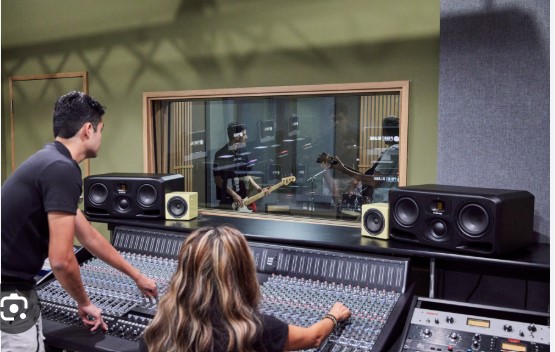Choosing the right instrument is crucial for musical development and enjoyment. With technological advancements, musicians now have access to instruments that combine traditional craftsmanship with innovative digital features. These tools provide versatile options for practice, performance, and composition, making them ideal for learners and professionals alike.
Advantages of Contemporary Instruments
Modern instruments offer benefits beyond traditional setups:
- Adaptable Sound Options: Instruments feature multiple voices and tones suitable for various genres.
- Enhanced Portability: Lightweight designs allow practice and performances in different locations.
- Integration With Technology: Connectivity to computers and music software enables recording, composition, and online learning.
- Low Maintenance Requirements: Unlike purely acoustic instruments, these digital options are easier to maintain.
These features make contemporary instruments appealing for musicians seeking convenience without sacrificing quality.
How Technology Supports Learning
Technology has revolutionized musical education:
- Interactive Lessons: Built-in learning modes provide guided exercises for beginners and intermediate players.
- Immediate Feedback: Players can hear errors instantly, which accelerates skill development.
- Recording and Playback: Self-assessment becomes easier through recording features.
- Online Integration: Access to digital tutorials, courses, and practice resources expands learning opportunities.
Combining technology with traditional techniques allows musicians to develop skills more efficiently.
Selecting an Instrument Based on Skill Level
Different skill levels require different instrument features:
- Beginners: Instruments should be intuitive, affordable, and easy to navigate.
- Intermediate Players: Seek more expressive sound options and realistic key response.
- Advanced Musicians: Require precise key action, extensive tonal variety, and professional recording capabilities.
Choosing an instrument that fits your skill level ensures gradual progress and avoids frustration.
Benefits of Learning With Online Tools
Online resources complement modern instruments and enhance the learning experience:
- Access to Virtual Classes: Structured courses and expert guidance help learners progress steadily.
- Community Engagement: Forums and discussion groups allow sharing tips and performance feedback.
- Music Libraries: Digital access to sheet music, tutorials, and practice exercises supports consistent practice.
- Interactive Software: Programs for composition and improvisation encourage creativity.
Integrating online resources with hands-on practice creates a well-rounded learning environment.
Features to Look for in a Digital Instrument
When exploring options, consider these features:
- Weighted Keys: Provide a realistic feel similar to acoustic instruments.
- Polyphony: Higher note capacity ensures rich, complex sound for advanced pieces.
- Connectivity Options: USB, Bluetooth, and MIDI connections facilitate recording and software integration.
- Built-in Effects: Reverb, chorus, and other sound enhancements allow experimentation with tone.
These features expand the creative possibilities for learners and professionals alike.
Maintenance and Care Tips
Proper care extends the life and performance of instruments:
- Regular Cleaning: Dust and fingerprints can affect the key response and aesthetics.
- Safe Storage: Avoid extreme temperature and humidity to maintain sound quality.
- Software Updates: Ensure digital features remain functional and improve over time.
- Gentle Handling: Protect sensitive components from impacts or drops.
Maintaining the instrument properly ensures reliability and consistent performance.
Matching Instruments to Musical Goals
Musical ambitions influence digital piano online the choice of instruments:
- Classical Enthusiasts: Require realistic key action and authentic sound reproduction.
- Modern Genre Players: Benefit from multiple sounds, effects, and recording capabilities.
- Composers: Need connectivity and software integration for arranging, editing, and producing music.
Selecting the instrument that aligns with your goals supports growth and long-term engagement.
Effective Practice Strategies
Adopting structured practice routines enhances skill development:
- Segmented Practice: Allocate time to technique, repertoire, and improvisation.
- Recording Sessions: Playback allows identifying and correcting mistakes.
- Metronome Use: Develops timing and rhythm accuracy.
- Exploration: Experiment with different genres and techniques to improve versatility.
Consistent, structured practice ensures measurable progress and reinforces learning.
The Future of Musical Learning
Digital instruments and online resources continue to evolve:
- Virtual Reality Integration: Immersive learning experiences may simulate live performance environments.
- Artificial Intelligence: AI tutors could offer personalized feedback for faster improvement.
- Cloud-Based Composition Tools: Musicians can compose, store, and share work online seamlessly.
Embracing these advancements ensures that learners and professionals stay at the forefront of musical innovation.
Conclusion
Choosing the right instrument is foundational for achieving musical goals. Modern instruments combine traditional playability with digital features, offering flexibility, versatility, and enhanced learning opportunities. Integrating online resources, selecting instruments suited to skill level, and maintaining them properly ensures a satisfying experience. Whether learning, performing, or composing, musicians can achieve greater creativity and efficiency with thoughtful instrument selection. Combining digital tools and structured practice supports musical growth and long-term engagement, offering endless opportunities to explore and master the art of music.
